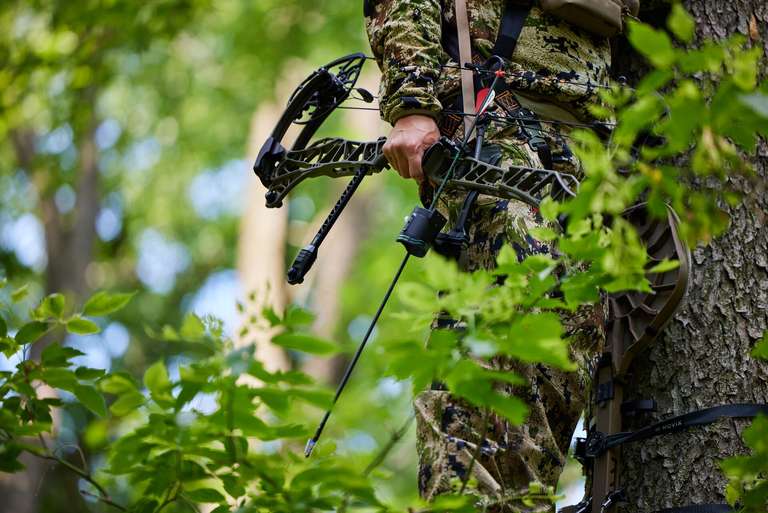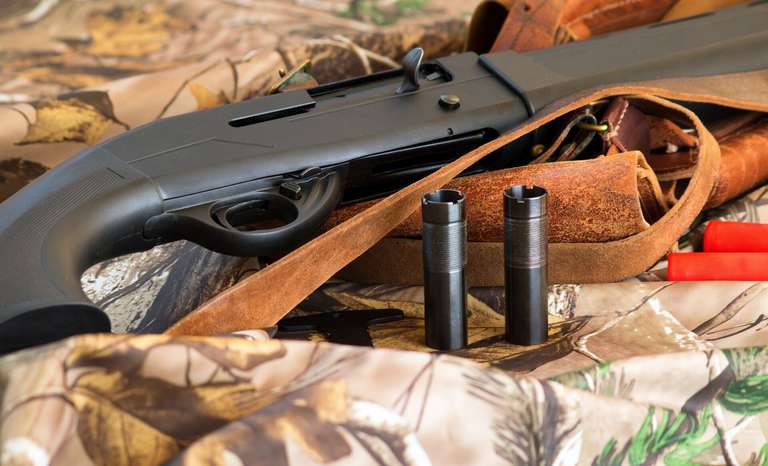Hunting Ground Blinds: How to Use Them to Hunt
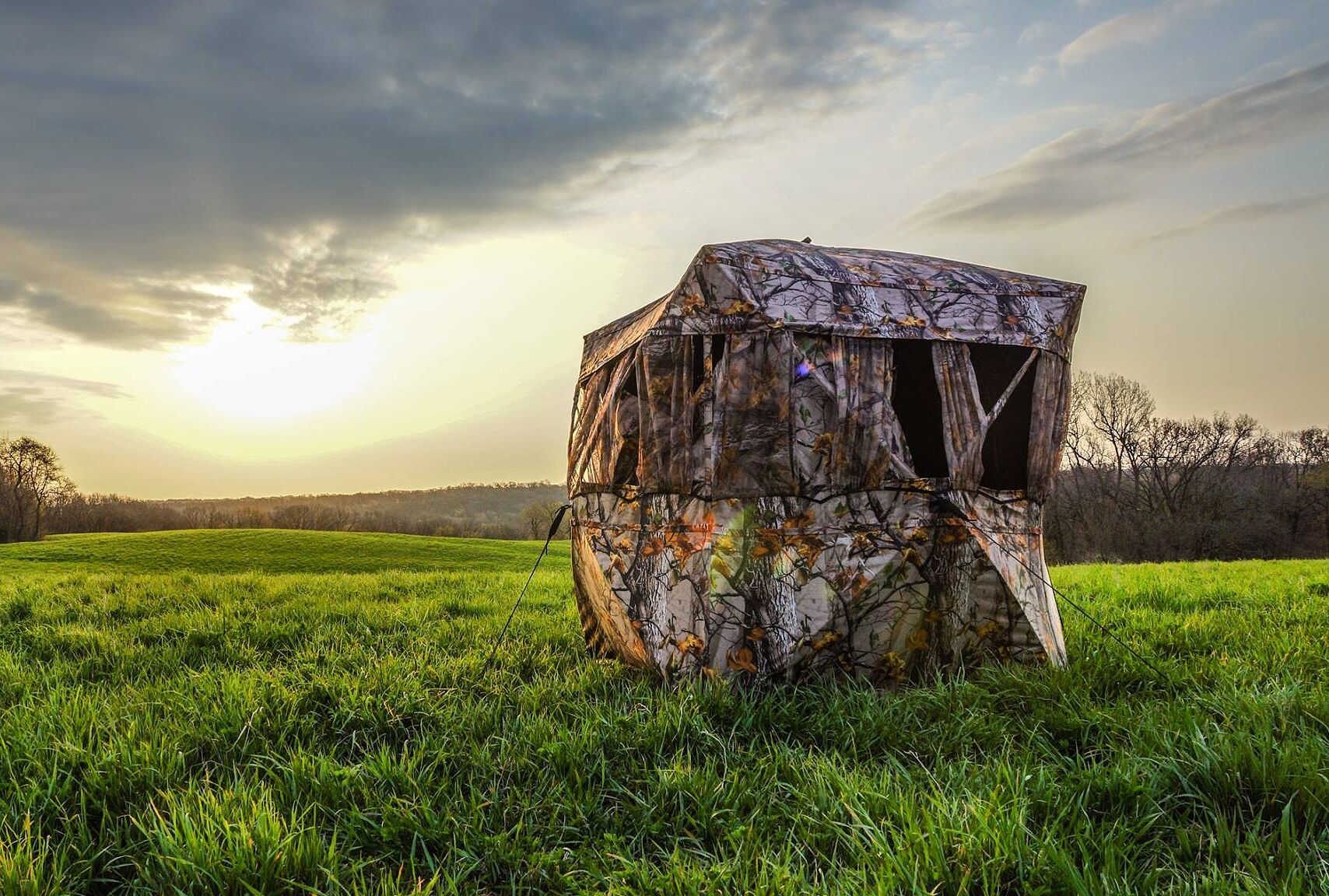
Hunting ground blinds can be effective for hunters who want concealment without the challenges of using a tree stand, or for those who hunt in areas with no suitable trees for elevated stands.
By properly using blinds (whether pre-fabricated or do it yourself hunting blinds) you can stay hidden in comfort while waiting for the perfect shot opportunity. Knowing the best hunting ground blinds, where to place them, and how to modify your hunting tactics can dramatically improve your success in the field.
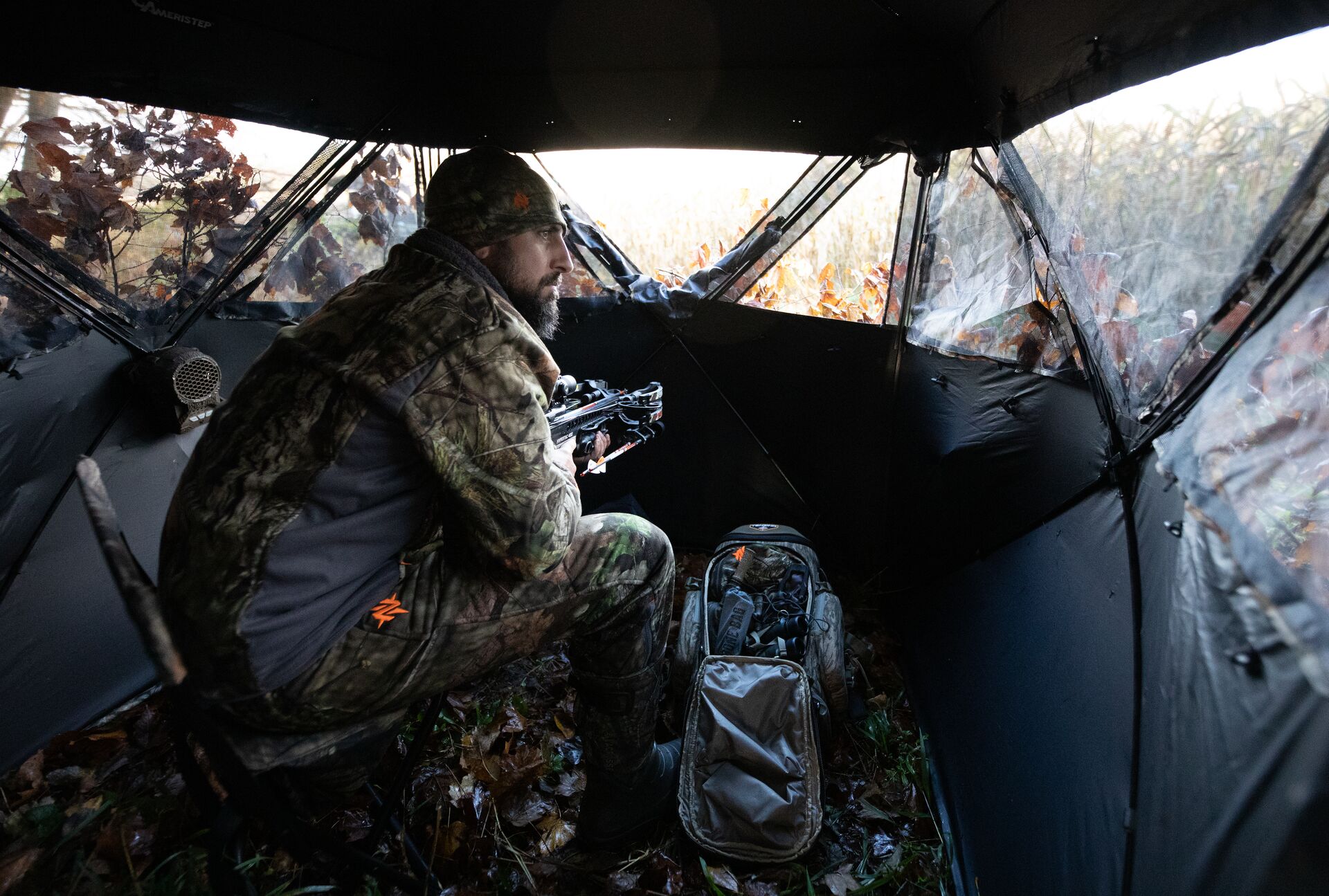
What Are Hunting Ground Blinds?
The blind's primary purpose is to hide your presence and allow you to ambush an animal from a close range for a practical and ethical shot.
Hunting ground blinds act as a stationary or portable shelter, concealing a hunter from a game animal's sight. Note that a blind does not necessarily hide your scent or sound.
Blinds typically consist of a metal, fiberglass, or wood structure covered with camouflage panels made of synthetic materials or natural vegetation. Blinds also provide comfort during extended periods of sitting, as well as protection from the elements.
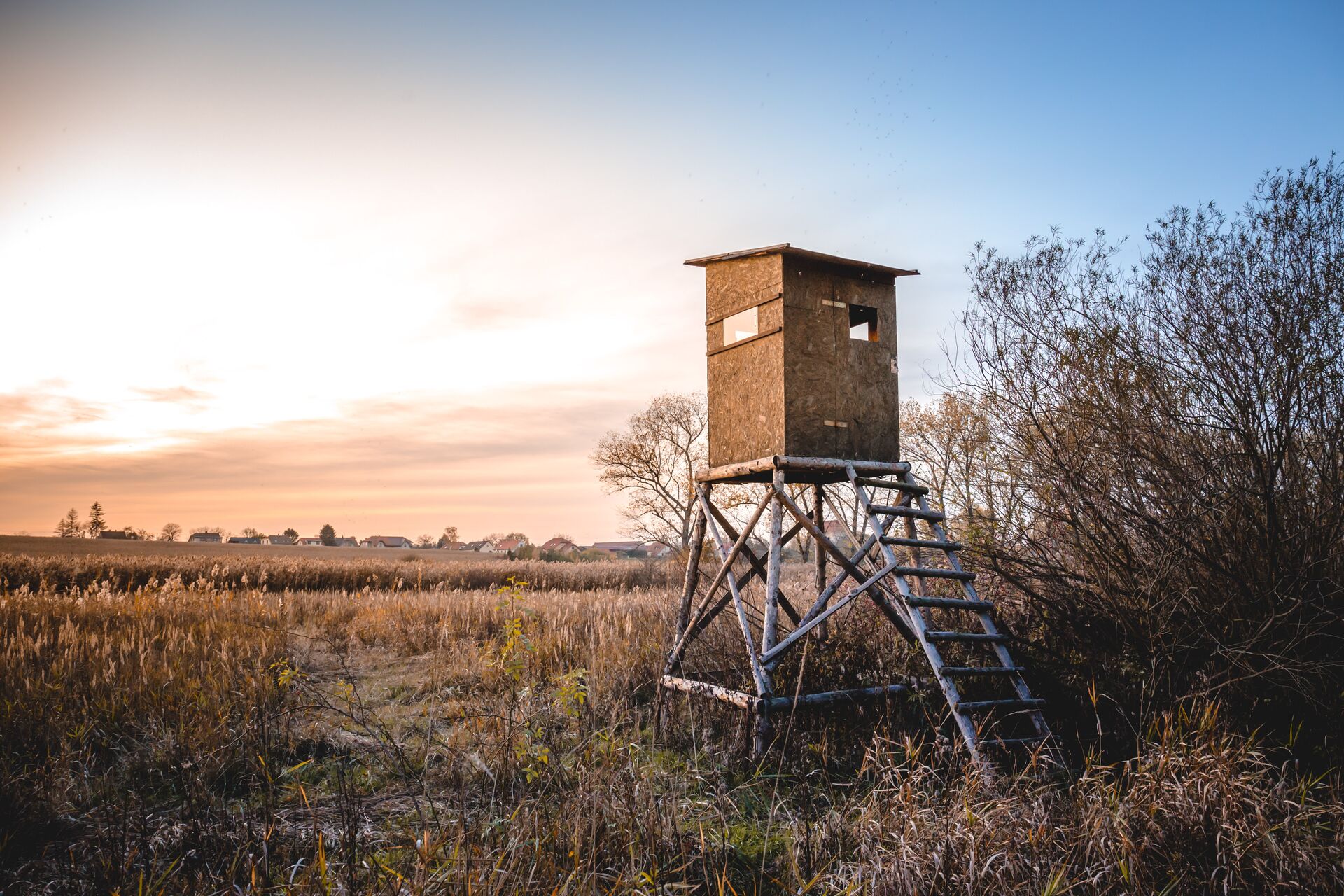
How Far Should a Blind Be from a Deer Trail?
The placement of your blind in relation to a game trail depends on your weapon and its effective range.
Most bowhunters will place a blind 20–30 yards from a deer. This distance is close enough for an accurate shot while still being far enough away to minimize spooking a deer. Firearm hunters can move a bit farther out and set up their blinds 40–100 yards from the trail.
Once you have an approximate distance, look at the surrounding terrain and vegetation. Dense cover allows you to move closer to the trail. At the same time, open areas dictate setting your blind at a greater distance to avoid detection.
Remember that deer have an extremely keen sense of smell, so be mindful of the prevailing wind direction when placing your blind.
Site Selection and Placement
Site selection is critical when determining your ground blind hunting strategies.
Scouting the area you wish to hunt can help identify an animal's activity patterns. Look for fresh tracks and scat. Then try to locate rubs, scrapes, feeding areas, bedding spots, and possible choke points.
Use these environmental funnels to guide deer, turkey, or feral hogs into your shooting lane naturally.
Additionally, always pay attention to prevailing winds. Your blind should always be downwind from likely travel routes. To minimize glare during sunrise and sunset, be mindful of the sun's location.
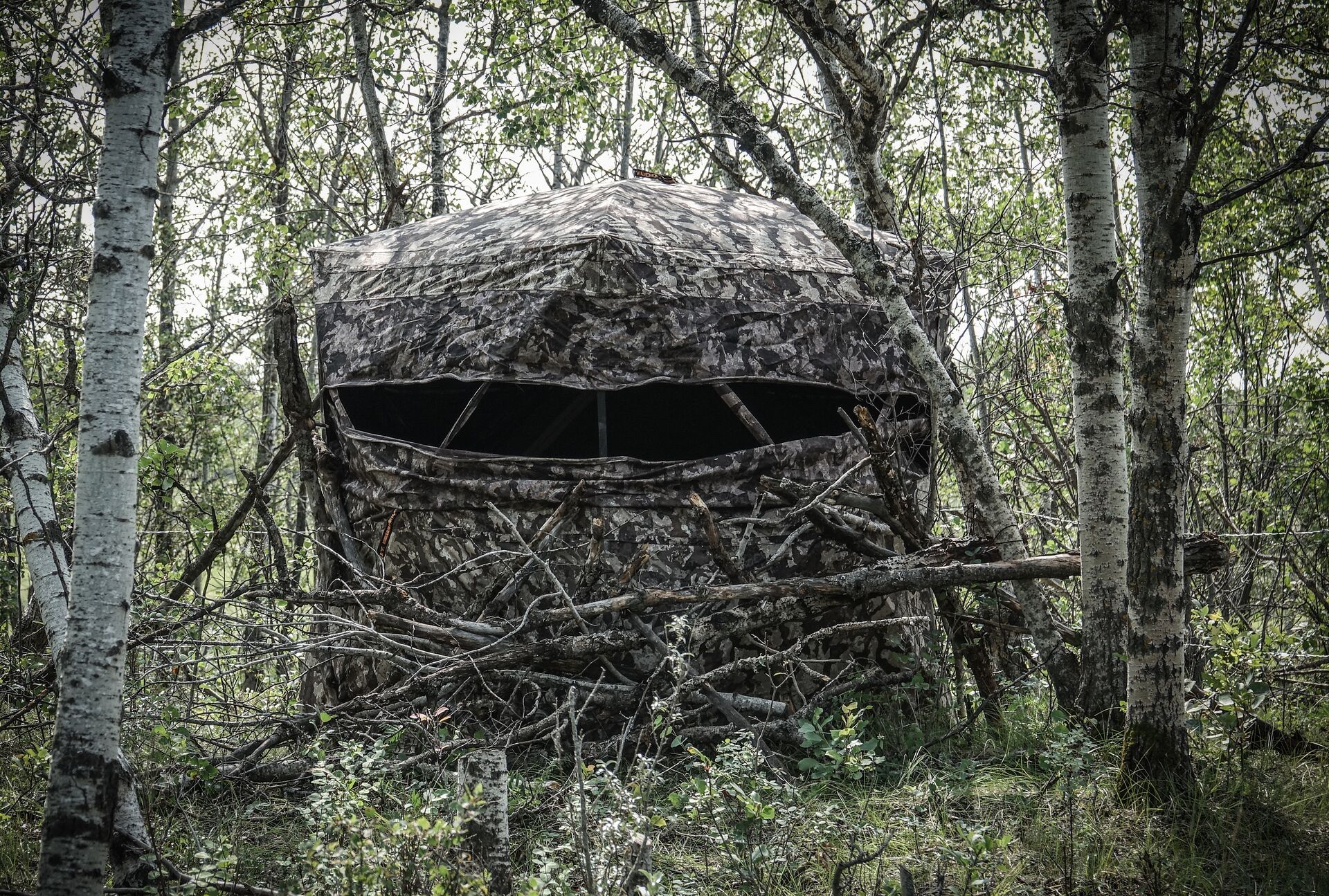
How Do I Set Up a Ground Blind for Deer Hunting?
As you learn how to hunt, you'll develop a system that helps you find the best spot and set-up for your hunting blind.
Planning can make all the difference when setting up hunting ground blinds. Accounting for deer behavior and your own hunting practices can help you blend into your surroundings, resulting in a more effective hunt.
Installation and Camouflage
If possible, set up your blind well in advance of the season so that deer will have time to get accustomed to its appearance and scent. Whether you're building a ground blind or setting up a temporary structure, make sure to secure it in the ground. Use stakes, anchors, and guy lines to keep temporary blinds in place.
Incorporate surrounding vegetation, such as branches, leaves, and grass, to break up the blind's shape and help it blend more seamlessly into the environment. Close any windows you're not using to hide your movements inside the blind and reduce your chances of being seen.
Interior and Comfort
Once you're inside the blind, clear away any sticks and leaves from the ground to reduce noise from your movements. Use a comfortable and stable chair or a padded stool that allows you to remain seated for long periods. You should also test the chair to make sure it doesn't squeak or make noise as you shift your weight.
A common question from new hunters is "How high should hunting blind windows be?" Windows should align with your preferred shooting position, providing a clear view through your shooting lane. Practice shooting from your blind to make sure you can fire your rifle or bow through the window without interference.

How Do You Stay Warm in a Ground Blind?
If you can't control your body temperature in the blind, your hunt will be at the mercy of the weather.
To stay in your blind for an extended period, wear suitable clothing for the weather. Begin with a moisture-wicking base layer, followed by an insulating mid-layer, then add a heavier outer layer, such as a puffy jacket. If the weather dictates, finish with a windproof or wind-resistant layer for extra protection.
Since you will be stationary for most of the time in your blind, consider bringing chemical or electric hand warmers, heated socks and vests, and an insulated seat cushion.
The ground is a surprisingly efficient heat conductor, so place a piece of carpet or rubber mat beneath your feet to keep them warm.
Don't forget to fuel your metabolic engine by bringing food and a thermos containing hot liquids, such as coffee, tea, or soup.
What's the Best Way to Stay Concealed in a Blind?

Move slowly and deliberately to reduce motion and avoid detection. While you're waiting for that perfect buck or gobbler to come along, practice moving your weapon into firing position to make sure you can do so quietly and with as few movements as possible.
As noted, don't forget to add vegetation and other natural materials to break up the shape of your blind. These natural materials can often offset poor blind placement.
Scent control remains critical for deer hunting, so be mindful of wind direction and minimize the windows you have open to limit scent dispersion.
Ground Blind Hunting Strategies
Once you have your blind properly positioned and your gear sorted inside, double-check to ensure you have a clear shooting lane from your window that doesn't compromise your concealment.
Determine the range to various landmarks within your shooting lane so you won't have to waste time using a rangefinder when a deer walks into view. You can write distances on a piece of paper that you can easily see without having to move.
To keep from getting bored and losing focus, review whitetail deer hunting tips and play mental games. I recommend the "What If?" game to identify and correct any potential issues while you're waiting in the blind.
- What if the deer approaches my blind from behind?
- What if the deer walks within my effective range, but a tree is blocking its vitals?
- What if I look through my rifle's optics, and the lens covers are still on?
- What if my arrow bangs against the rest?
Use your imagination to troubleshoot and prepare for a wide range of circumstances.

Learn More About Hunting Safely with a Hunter Safety Course
Incorporating hunting ground blinds into your deer or turkey hunt can be an incredibly effective way to stay concealed and comfortable in the field. Successful ground blind hunting strategies require proper location, patience, preparation, and a healthy dose of creativity to avoid detection.
Knowing how a blind fits into your overall hunting strategy is only a small part of your overall hunt. Give yourself an advantage by completing an online, interactive hunter safety course through ilearntohunt.com. Our state-specific courses provide vital information on hunting techniques, safety fundamentals, ethical practices, and animal behaviors, serving as a perfect complement to your hunting experience.
Plus, most states require hunters to pass a hunter safety course before getting a hunting license or heading into the field.
Set yourself up for safety and success this season! Take the ilearntohunt course for your state.
Frequently Asked Questions (FAQs)
We have answers to your questions about using hunting ground blinds!
Q: How do I set up a ground blind for deer hunting?
A: Place your ground blind downwind of where you expect deer to travel, blend it with natural cover, and set it up days before hunting so deer get used to it.
Q: How far should a blind be from a deer trail?
A: Typically, setting a blind 20–30 yards away from a deer trail gives you a good shooting range without alerting the deer.
Q: What’s the best way to stay concealed in a blind?
A: Wear dark, non-reflective clothing, keep movement minimal, close unused windows, and avoid light leaking from inside the blind.
Q: How do you stay warm in a ground blind?
A: Dress in layers, use insulated boots and hand warmers, bring a small safe heater if allowed, and block drafts around the blind’s base.
Set yourself up for safety and success this season! Take the ilearntohunt course for your state.



